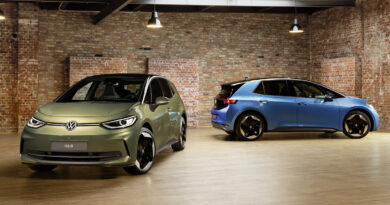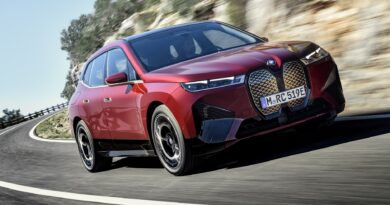BMW’s iX-debuting iDrive 8 operating system explained
The new generation BMW iDrive 8 operating system makes its debut in the electric iX large SUV this year, with the German prestige brand detailing its readiness for “a digital future”.
BMW’s iDrive – with its rotary dial and a digital display – has been with us for 20 years now. At first much criticised, the operating system is now deemed one of the finest in the business. This latest generation has been designed very much with BMW’s current and forthcoming electric models in mind.
Interestingly, a My Modes function allows the user to select acoustic changes, including adjustment of the engine/motor sound. This is an interesting feature for EVs, where you can stick with silence, or, perhaps controversially, select the sound of, say a BMW straight-six, V8 twin-turbo or maybe a V12.
No word from BMW, sadly, on whether such sounds would be offered in the iX, but the German brand has, in the past, hired Hollywood’s Hans Zimmer to create sounds for BMW’s EV future.
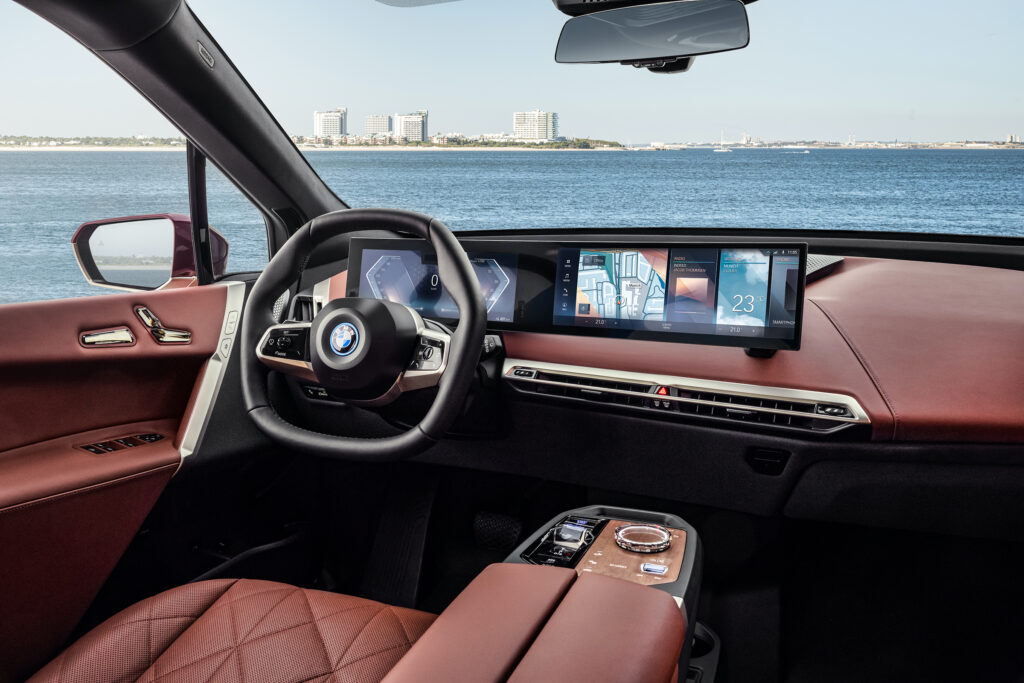
Goodies coming with iDrive 8 include a curved 14.9-inch touchscreen display angled towards the driver, merging with a 12.3-inch information display to form a single unit. Both have an impressively high graphic resolution of 200 ppi, while control is through the touchscreen, rotary dial, or, clearly preferably, through “dialogue-based interaction using natural language”.
The result is almost half the number of buttons and switches than before, and the pictures show what an incredibly uncluttered cabin it is.
We’re assured BMW’s “Act, Locate and Inform” principle is properly expressed with the new setup, ensuring information is distributed clearly and screen redundancy is avoided, meaning only relevant stuff is presented to the driver.
In the iX electric SUV the Touch Controller (on the rotary dial) has been given a glass-effect finish, and is surrounded by a bezel painted in Gold Bronze.
BMW says the improved operating system is able to “actively engage in its relationship with those on board and, in so doing, serves as a digital, intelligent and proactive partner in any situation.” We’re told the BMW Intelligent Personal Assistant adjusts to the driver’s individual needs and routines, as well as the situation in hand. This machine learning is designed to tailor the functions controlled via iDrive to the driver’s needs and preferences.
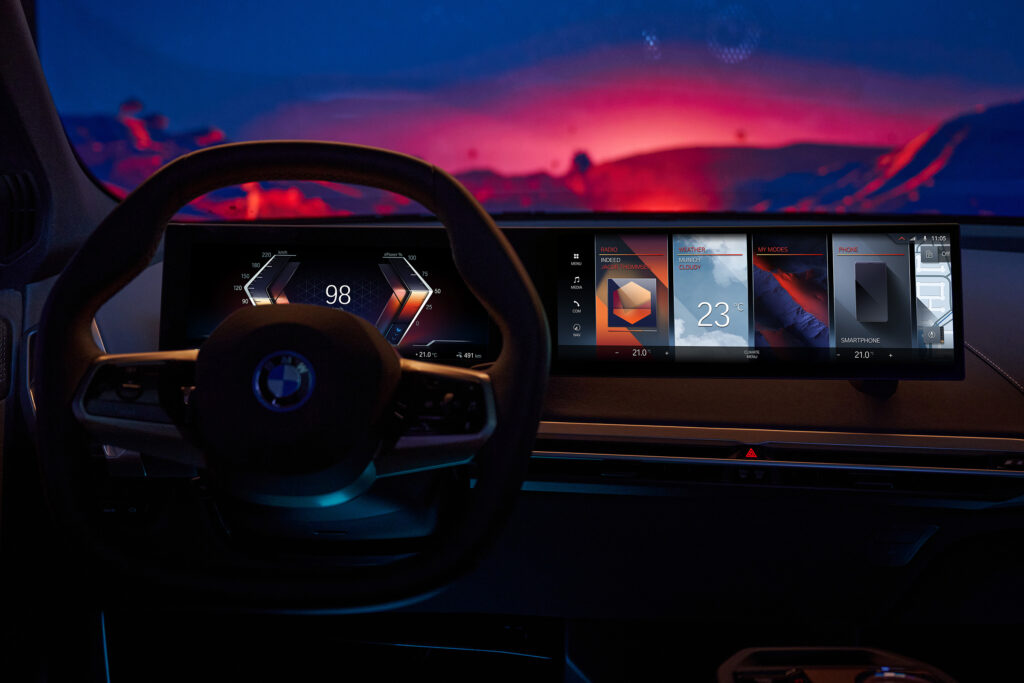
Users can give the BMW Intelligent Personal Assistant a name of their choice. Most stick with “Hey, BMW” – but it appears equally possible to name yours Barry, or Wolfgang, or Susan, to use as a prompt.
A new interface offers, If you’ll pardon BMW’s PR enthusiasm, “strong and eye-catching graphics, modern colours, futuristic textures and forms, bright light and the interplay of reflections (to) create an impressive and immersive visual appearance.”
If you fear all things 1984 and Rise of The Machines, look away now. BMW’s championing its “Great Entrance Moments” user experience (yep, really) which “brings emotionality to the relationship between driver and vehicle even before the driver climbs on board.”
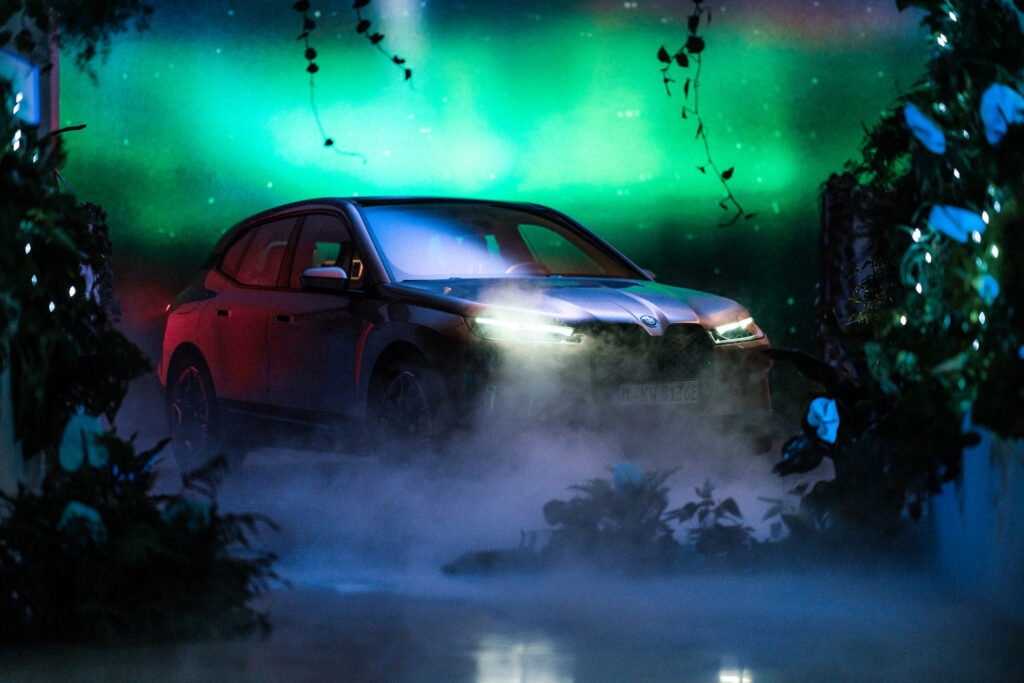
Basically, the car uses ultra-wideband (UWB) radio technology accurately pinpointing the driver between the vehicle and their key or smartphone. In sequence, the car wakes up as you approach, gradually illuminating the exterior and interior lights.
A “light carpet” shows you the way to your door, the car unlocks, the seat moves to your ideal entry position while seat and steering wheel heating engages. Then, of course, the curved display begins your welcome animation. If you don’t feel a Very Important Person by now you probably never will.
The iDrive takes a large quantity of self-generated data, learns from repetitive situations and takes regular over-the-air improvements.
BMW says the new iDrive 8 will be rolled out gradually across all vehicle classes. It makes its debut this year in the BMW iX (arriving in Australia in the fourth quarter of 2021), before next featuring in the BMW i4 sedan.



